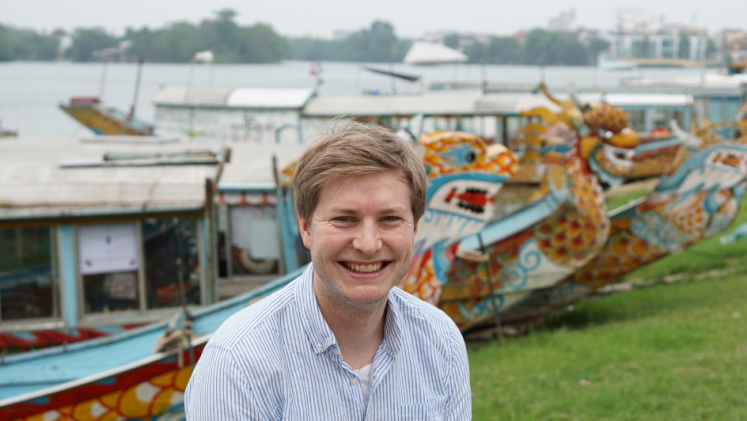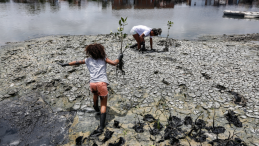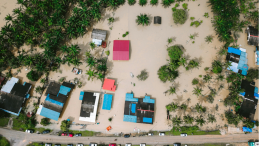Who: Dominic Sett, Research Associate & PhD candidate
When: from 20 March – 18 April 2023
Where: Huế, Central Viet Nam
Why: To discuss flood impacts and better understand local perceptions of flood risks and adaptation options
Many urban regions across the globe are affected by floods. One region that is particularly prone to flooding is Central Viet Nam, which suffered from severe flood impacts in 2020. In the context of its FloodAdaptVN project, UNU-EHS along with partners from Germany and Viet Nam conducts research to better understand current and future flood risks and identify adaptation options. More information about the project is available here.
What is your role in the FloodAdaptVN project?
Due to its geographic characteristics, central Viet Nam is a high flood risk area. Rivers discharge large amounts of water from the mountains down to the Tam Giang lagoon and into the sea. Tropical cyclones bring heavy rainfall, the frequency and magnitude of which is accelerated by climate change. At the same time, the region is experiencing rapid urbanization and socio-economic change. This increases the number of exposed people living in flood prone areas, which in turn increases their vulnerability to disaster risks.
One of my main roles in the FloodAdaptVN project is to assess direct and cascading risks that floods pose on people, infrastructure, livelihoods, and the environment in Thừa Thiên Huế province. To understand why those risks prevail in Huế, we collected information about past events and their effects. It was crucial for us to look beyond just measuring the impacts and instead focus on the underlying causes and connections between risks and impacts. With partners and stakeholders from Germany and Vietnam I co-developed impact chains. These are models that visually represent how risks and impacts are connected, and what the risk drivers below the surface are. Our next step is to analyse these risks in different areas to identify specific high-risk zones within the study area. This spatial analysis will provide valuable information about the factors that contribute to the risks and will help us predict how risks may change in the future. With this information we can develop appropriate adaptation strategies and determine the best locations to implement them.
My second main task in the project is to analyse the role of behavioral factors for flood risks, as well as the adaptation perceptions of households. For example, my research aims to understand how households think floods will affect them in the future, why they consider these risks high or low, if they intend to adapt to perceived risks, and what the factors are that encourage or prevent them from taking action. These questions are core to my PhD research, which aims at better understanding how households’ living conditions affect their risk perception and adaptation preferences. These insights will help to better understand people’s needs and adaptation demands and thereby provide an important people-centered perspective on adaptation in the context of floods.
How did the field mission contribute to your work?
My main objective for the field mission was to support a household survey, which we had designed in the months prior to the trip and which was run by our local project partners in Huế. During my stay, I trained surveyors on how to conduct surveys and provided ongoing support for their data collection efforts in the field. This involved visiting various residential areas and documenting my own observations regarding the living conditions in different parts of Huế. For me, these field observations and being able to better understand the perspectives of those affected by floods are probably the most important aspects of field missions.
The collected survey data provides information on past impacts, adaptation measures, flood risks perception, and adaptation preferences for more than 600 households across Huế. This information is extremely valuable as it helps to understand linkages between living conditions, flood risks perceptions and adaptation preferences. It thereby substantially contributes to my PhD research. An initial analysis of the data shows that many households are very aware of the risks associated with floods, which leads them to take adaptive measures like elevating the ground floors of their houses. However, there are significant differences in the levels of risk awareness and adaptive actions across households, which we will explore in the coming weeks.
In addition to the survey support, I met various experts, authorities, partners and households in Huế, to discuss project findings with and to collect new insights from. First and foremost, I met experts from local authorities, academia and civil society to discuss our impact chain results. Since several findings were derived from literature reviews, it was important for us to consult local experts to validate our findings and to add new inputs.
Field missions such as this one are crucial for capturing these human perspectives. They enable the co-creation of our research outputs and findings, which is vital for successful adaptation to climate risks.




